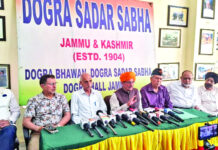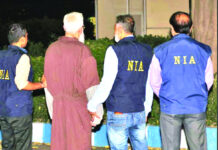Mumbai, June 25: The most distinguishing feature of Rashid Khan’s face is his eyes. The alert, almond eyes, offset by thick and curved eyebrows, could glow with affection, sparkle with pride or reflect a vague dullness within seconds. Those eyes are a window to his mind and reflect the ebbs and flows of the match. The joy that sparked when a wicket fell, the rage that flashed when a catch was dropped, the dejection when Bangladesh batsmen hit a four, the desperation when rain lashed down and his team was behind on DLS.
He shut those eyes when Naveen-ul-Haq nailed Mustafizur Rahman in front and sealed Afghanistan’s historic entry into the World Cup semifinals. He shut his emotions to the world. Perhaps he just wanted to experience in flash what he had experienced to fully soak the hour of glory, of pure bliss. Childhood years spent in stifling fear in the saffron-rich Nangarhar province in Jalalabad; the escape to Peshawar, his falling in love with the game, his first love that was fast bowling, the reluctant embracing of leg-spin, the rapid progress, the memorable journey to stardom, and now the guiding light to his team’s most historic moment in the game.
In many ways, Afghanistan’s cricketing journey is Rashid’s journey, intertwined and inseparable. You tell his story, you are telling the story of his country’s stirring cricketing journey too. He is his country’s cricketing icon and identity, he defines his country’s cricketing ethos; he defined their World Cup dream run. His four-wicket spell set up the match, his 14 wickets captured the romance of Afghanistan dream run in the tournament. It has been a tournament in which cricket’s master of disguise took on at least half a dozen guises: talisman, calm head, voice, identity, hope and googly-whipping spellcaster. He took wickets, and when it mattered he scored runs too. His 10-ball 19 against Bangladesh was worth its weight in gold.
A month ago, though, he was struggling. In the IPL, his team, Gujarat Titans finished eighth, he struggled for rhythm, snared only 12 wickets in 10 games, bled 8.40 runs an over.
But Rashid did not panic. Even if the wickets were not coming, he knew he was rediscovering his tunes. He could feel the energy in his fingers.
“I know I am bowling well when I feel the energy in my fingers,” he tells The Indian Express. His almond eyes gleam with a mystical shine when he talks about his biggest gift, one that, in part, defines the most feared and most sought-after signature in franchise cricket. It’s no mystery, he emphasises. “I happen to have strong fingers,” he almost whispers, almost apologetically. “Gift of nature,” he re-emphasizes.
When he doesn’t get the flow of energy in his fingers, he feels like someone else. “It is something that matters to me more than the numbers on the board. I get a feeling that it’s not me, it’s some other person because it is not coming out of my hand as I want it to, even if I had delivered the goods,” he explains.
This World Cup, the ball has come out of his hands the exact way he wants it.
He demolished Bangladesh with his staple wrong’uns; he kept Australia guessing with a cocktail of wrong’uns and top-spinner; he traded all three wickets against India with his leg breaks.
You watch him bowl and you realise why he treasures his fingers more than most leg-spinners. “My grip is in the tips of the fingers. It gives me more pace, control and the ball snaps out from the top of my fingers. It’s the reason I am different from other leg-spinners.”
Rashid is an antithesis. He does the opposite. He bowls both the leg-break and wrong one from the back of his hands. It means the release points are the same and the batsmen can’t decode the variation by watching his wrists alone, which in itself is a difficult art. His wrong ones are quicker than the leg-breaks. The leg-breaks turn less than the wrong ones as well. The classicists swirl the leg-breaks from the side of their elastic palms. There are more wrists and flourish, transforming it to the realm of magic. But Rashid has translated the prosaic finger-spun leg-spin into improvisational verse.
ADVERTISEMENT
It helped that he had little formal training. “Maybe, if I would have changed my action I would have lost my speed and rhythm.” The leg-break, he says, was already there. From the moment he decided to quit bowling fast and try leg-spin, with the taped ball. There is a striking influence of his idol Shahid Afridi, an upgraded version perhaps. He holds the ball on the tip of the first three fingers. The index finger, wrapped beside the seam, and middle finger, placed just above the seam like a molar, and the thumb acting like a backrest. The gap between the index and middle fingers is massive, more like an off-spinner.
Unlike the conventional legspinners, the ball rests mostly on his fingers rather than the inside of the palm. He releases the ball from the top of the middle finger. “It came naturally and then you try your best to practise on it and get better and better when I was a kid. Later I found it was unique, that you are opposite to all the leg-spinners who are traditional. But I realized I need to make it better and better,” he says.
The first resort was the wrong one, now his most dreaded weapon. Paradoxically, his first experiments with it involved a lot of wrists into the release. “But I had little control and used to get hit. I realised I was using more of my wrists. So I tried bowling the wrong-un with the same leg-spin grip. and I worked really hard on it. Practise, practise and a lot of spot bowling, before I perfected it,” he says.


























